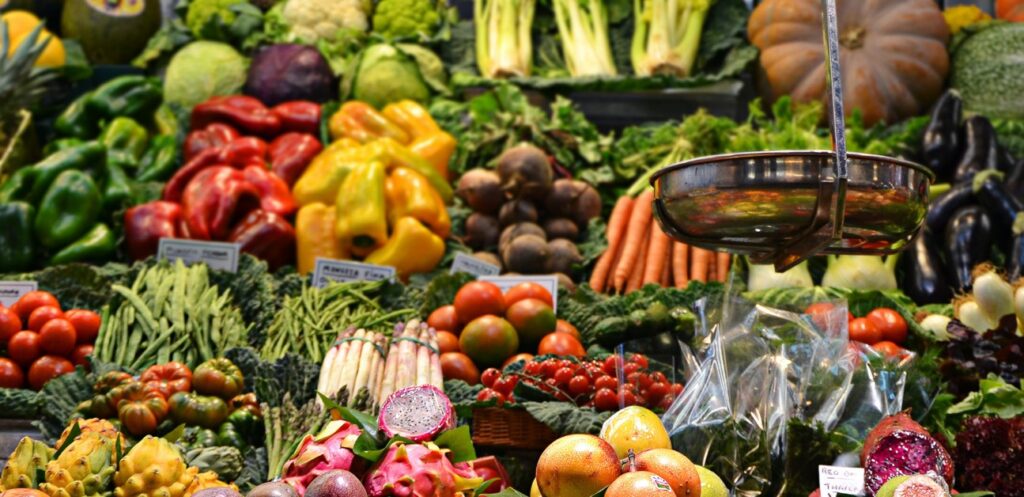Carb Cycling For Endurance Athletes

Endurance athletes are faced with a bevy of nutrition decisions. Carb cycling is a nutrition strategy based on the percentage of macronutrients. Depending on your goals, carb cycling may be the right choice for you.
For more information on training check out Ask a Cycling Coach Ep 255.
Macronutrients and Why They Are Important
As complicated as nutrition can seem, you can break it down into three main categories. Carbohydrates, protein, and fats are the three main macronutrients. Each one is essential for health and performance on the bike. Before diving into carb cycling, let’s review why you need each macronutrient.
Carbohydrates
Carbs are comprised of sugar and are the preferred energy source for the body. Carbs are broken down into glucose and stored in the liver and muscles as glycogen. Carbs are essential for endurance performance. As you increase the power to the pedals, you burn up the carbs you have on board. There are four calories in a gram of carbohydrates.
Protein
Proteins are the building blocks of the body. They are necessary for repairing and regenerating body tissues and play a role in creating hormones. Proteins are made from amino acids, some of which your body can produce and others that can only be obtained through your diet. Protein is important for endurance athletes because it repairs the muscle damage induced by training. There are four calories in a gram of protein. The general recommendation for protein intake for endurance athletes is between 1.2 to 1.4g per kilogram of body weight.
Fat
Fat is the third macronutrient and is vital for a healthy body. Fat helps with thermoregulation, keeping cells intact, and brain function. Additionally, fat is required for the absorption of some vitamins. Our bodies are very efficient at storing fat. Excess carbs, protein, and fat all get stored both under the skin and around our organs. Your body uses fat as a fuel source during low-intensity exercise. Dietary fats are calorically dense, with nine calories per gram.

What is Carb Cycling?
A common dietary discussion is what percentage should each macronutrient be in a diet. What is best for you will depend on your goals and individual needs. Since the recommended amount of protein is fixed, your choices will revolve around the percentages of carbs and fat.
Traditionally, endurance athletes choose high carbs and low fat. It’s easy to see why. Carbs are vital for increased performance on the bike. However, some athletes have decided to go low carb and high-fat to burn more fat as a fuel source. Carb cycling is a compromise between the two.
Carb cycling is planned adjustments to your daily carbohydrate intake in response to your training needs. In other words, you try to increase the number of carbs you need for an intense workout or race, but then lower the carbs and increase fat intake for rest days and low-intensity work. How much you reduce the carbs can vary and is best decided by personal experimentation.
Does Carb Cycling Work?
The benefits of carb cycling depend on what you are after. At face value, carb cycling seems like a good idea since slow-twitch fibers prefer to burn fat for fuel. If weight loss is your primary goal, carb cycling might work for you. Additionally, carb cycling might be good for increasing training volume at low intensities.
Carb cycling on a rest day may come at the expense of nailing your next workout. Rest days are when you can refuel your body for the upcoming work. Increasing fat on a rest day is likely unnecessary.
For rest week nutrition, carb cycling can help curb hunger. This is because fat aids your body’s ability to feel fuller for longer. You do have to be careful about consuming excess calories, because fat is much more calorie-dense.
While carb cycling can work for some athletes, it’s important to remember to have enough carbs on board to fuel your high-intensity workout. Additionally, fat is just as crucial for health, albeit in lower amounts.
Healthy Fats and Carb Cycling
If you are going to give carb cycling a go, try your best to increase the amount of healthy fats you consume. You want to avoid artificial trans fats as much as possible. So when you cycle out the carbs and increase fat, you can try plant-based fats like avocado, nuts, and olive oil. Another great source of fat is fish like salmon and fresh tuna. You can even go for a full-fat yogurt like Greek yogurt. Just be sure to avoid the kinds with added sugar.
Depending on your goals and type of training, carb cycling may be right for you. Carbs, protein, and fat are all critical for your performance, but what works for one cyclist may not be best or you. For more information on carbohydrates and performance, check out How to Use Carbs for Maximum Performance.
For more cycling training knowledge, listen to the Ask a Cycling Coach — the only podcast dedicated to making you a faster cyclist. New episodes are released weekly.
